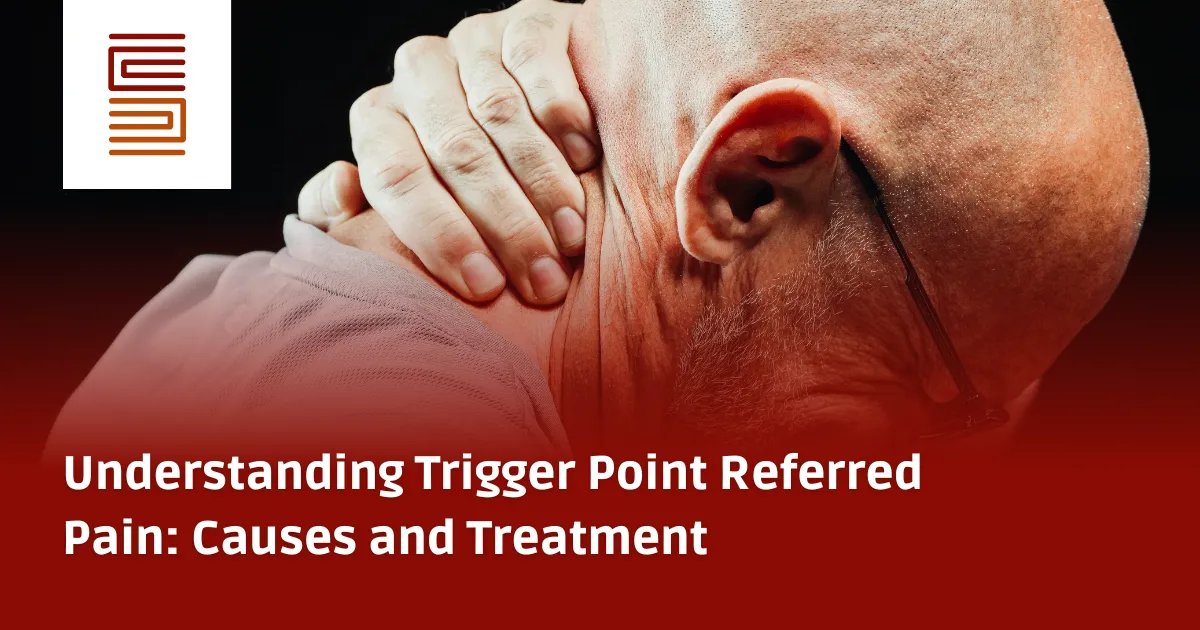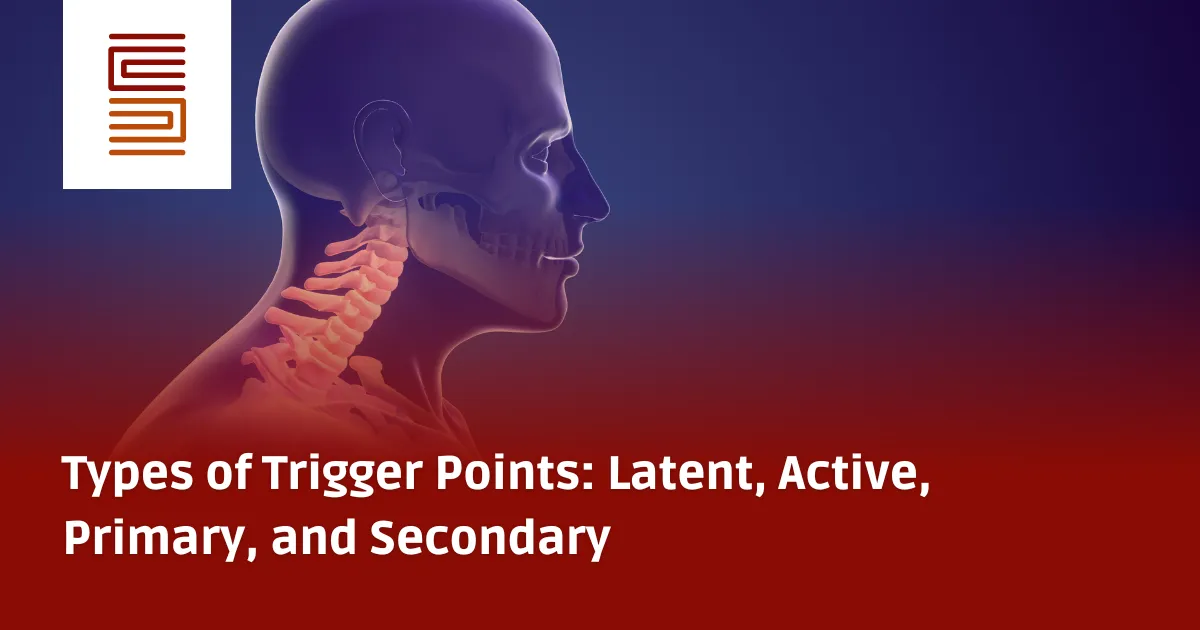Understanding Trigger Point Referred Pain: Causes and Treatment
Understanding trigger point referred pain is, how trigger points can cause pain in distant body regions, and how to identify and effectively treat these hidden sources of pain.
What is Referred Pain?
Referred pain describes the discomfort felt in a region of the body different from the actual source of the problem. Most people associate referred pain with internal organs, such as experiencing arm pain during a heart attack. However, skeletal muscles—our body’s largest organ—can also produce referred pain through active trigger points.
Why Does Trigger Point Referred Pain Occur?
Trigger point referred pain occurs because the nervous system mistakenly interprets pain signals from muscles as originating in other regions of the body. This phenomenon creates confusion in pinpointing the actual cause of pain.
Statistically, studies on trigger point referred pain reveal:
- 56% of trigger points refer pain to both local and distant regions.
- 24% of trigger points refer pain only to local regions.
- 20% of trigger points refer pain only to distant regions.
This widespread pattern makes identifying the true pain source challenging, often leading to ineffective or incomplete treatments if the underlying trigger point is overlooked.
An Example: The “Neck-Ache” Misdiagnosis
Consider a common scenario: neck pain. Logic suggests if the neck hurts, the problem must lie there. A medical examination usually focuses directly on the neck’s muscles, bones, and joints. However, the actual source of neck pain often originates in the lower trapezius muscle, located between the shoulder blades—not the neck itself.
This counterintuitive finding highlights how easily referred pain can mislead practitioners and patients alike. Trigger points in muscles such as the trapezius cause pain referral to adjacent areas, creating confusion and potentially delaying appropriate treatment.
Why Does Referred Pain Exist?
The primary function of pain, including referred pain, is to protect injured tissues by limiting their use and promoting healing. In the example of neck pain caused by the trapezius muscle:
- Pain referred to the neck discourages movement of the head and neck.
- The resulting immobility allows the trapezius muscle time to recover from overload.
This protective mechanism demonstrates how the body instinctively uses referred pain as a method of healing.
Trigger Points: Not Just Pain, But Also Motor Distortions
Trigger points do more than produce pain—they also create motor distortions in muscles:
- Some muscles become neurologically inhibited or weak.
- Others become hyperactive or prone to spasm.
These muscle imbalances serve the same protective purpose as pain referral, discouraging certain movements and promoting healing of the muscle harboring the trigger point.
Importance of Recognizing Trigger Point Patterns
Effective treatment relies on therapists understanding the patterns of trigger point referred pain. Properly identifying these patterns allows:
- Accurate identification of pain sources.
- Effective targeting of treatments to the root cause.
- Reduced recurrence of symptoms through corrective exercises and lifestyle adjustments.
Common Trigger Point Referred Pain Patterns
Examples of common trigger point referrals include:
- Lower trapezius: Refers pain upward into the neck and head, causing headaches and neck stiffness.
- Piriformis muscle: Can mimic sciatic nerve pain, referring discomfort down the leg.
- Pectoralis major muscle: Refers pain into the shoulder and down the arm, resembling symptoms of nerve impingement or heart-related pain.
Understanding these patterns is vital to avoid misdiagnosis and provide targeted treatment.
Addressing Trigger Point Referred Pain
To effectively address referred pain, a comprehensive approach is essential:
- Trigger Point Therapy: Manual release techniques, dry needling, or massage to deactivate trigger points.
- Corrective Exercise: Strengthening weakened muscles and stretching tight ones to restore balance.
- Education and Postural Correction: Adjustments in daily habits and ergonomics to prevent recurrence.
New Mexico Support Network’s Approach to Trigger Point Management
At New Mexico Support Network (NMSN), we specialize in addressing chronic pain and dysfunction resulting from trigger points and referred pain patterns. Our services include:
- Home Care Services: Daily support for managing chronic muscle pain and mobility limitations.
- Hospice Care Assistance: Providing comfort and effective pain management for individuals with chronic and long-term conditions.
Our integrative approach ensures comprehensive care, addressing the underlying muscular dysfunctions that lead to persistent pain.
Take Control of Your Pain Today
If you struggle with unexplained pain, understanding and addressing trigger point referred pain could be the key to relief. For professional assistance and personalized care:
Email: care@nmsupport.com
Phone: +1 833-773-0033 or +1 575-449-2009
Visit: New Mexico Support Network




